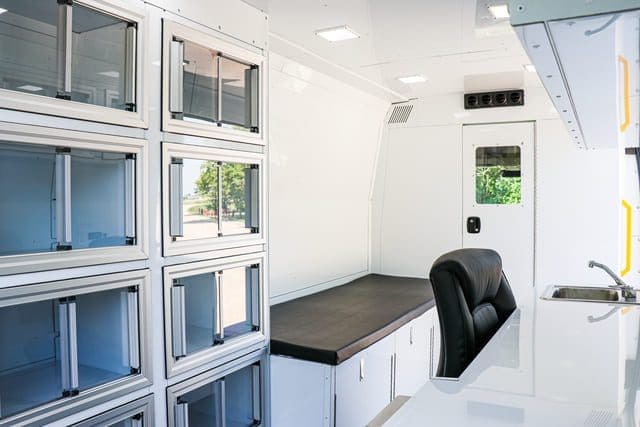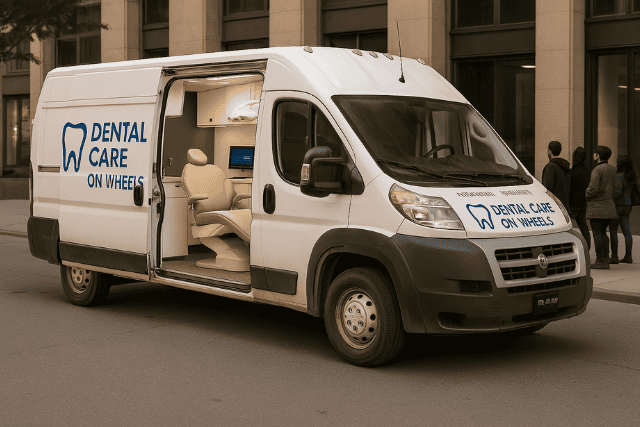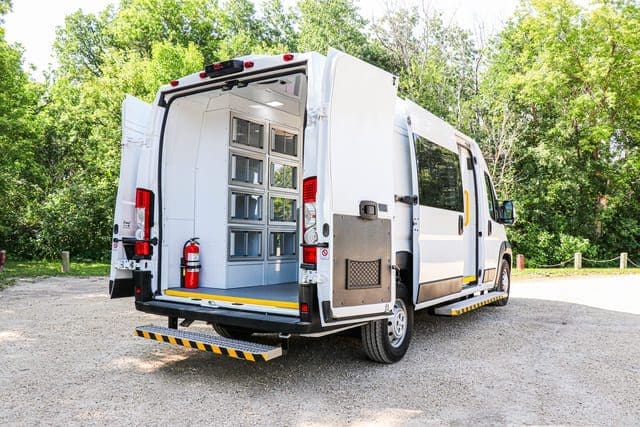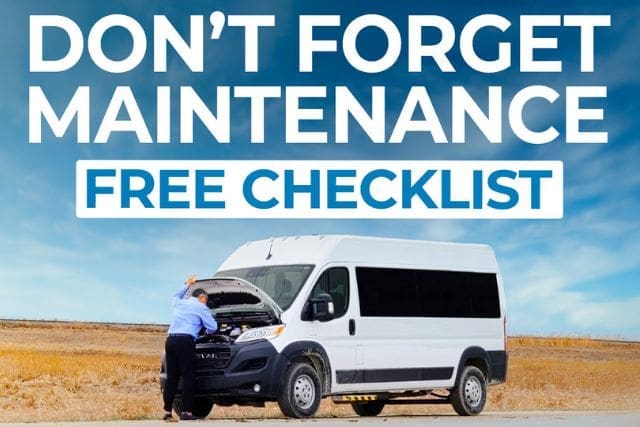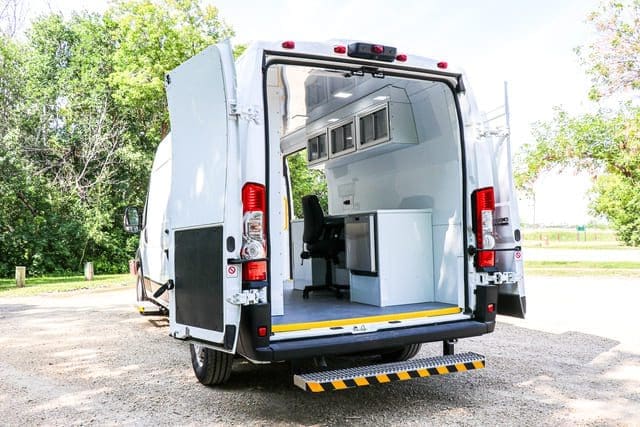Think about this: You’ve eaten apple pie every day for years. Now you have type 2 diabetes. Would anyone judge you? Would people blame you for needing insulin? Probably not. But when someone develops an addiction to drugs or alcohol, they face harsh judgment. They’re blamed for needing treatment. They’re treated like they’re the problem. Does that seem fair?
This stigma around addiction runs deep. Especially when it comes to medication assisted treatment (MAT). Many organizations considering providing MAT feel stuck because they fear how others will react. You may be thinking, “Is it even worth starting a MAT program it if my community won’t support it?”
My name is Russ Evans, and I get your concerns.
I’m a mobile healthcare advocate at AVAN Mobility, and I’ve seen firsthand how addiction affects people and their communities. Treatment options, like medication-assisted treatment (MAT), can really make a difference in recovery.
But I get it—there’s still a lot of stigma around these methods. Many businesses and organizations I talk to want to help but are concerned about possible backlash. It’s clear you care about doing what’s right for your community, and those worries are totally understandable.
What factors contribute to the stigma surrounding medication-assisted treatment? It’s a question that keeps coming up. The truth is people don’t understand what it really is or how it works. In this article, I’m going to unpack why this stigma exists and what we can do to change the conversation.
What exactly is medication assisted treatment?
Let’s talk about what medication assisted treatment actually is because a lot of folks still don’t know. MAT is a way to help people struggling with addiction by using medication along with therapy. It’s designed to treat the whole person, not just the addiction itself. Here’s what it involves:
Medications: These help with cravings and withdrawal so the person isn’t constantly fighting the urge to use.
Counseling: Therapy helps them figure out what triggers their addiction and gives them tools to handle those challenges.
Support: People get help not only from medical professionals but also from social support to stay on track.
MAT is most commonly used for opioid addiction, but it’s useful for other addictions, too. Medications like buprenorphine, methadone, and naltrexone help get the brain back to a healthier state so people can focus on living their lives and getting better.
The DEA recently announced that doctors can now prescribe buprenorphine—one of the most effective medications for opioid addiction—through telehealth for up to six months without needing an in-person visit. This is big news for anyone struggling with opioid use disorder, especially in areas where access to treatment is limited.
The unmet need for MAT is huge
Here’s a big stat to think about: Around 2.5 million Americans have opioid use disorder. But only a third of these people get treatment. That’s a huge gap.
Many people are not getting the help they need, and a big reason for that is the stigma surrounding MAT. This gap shows how important it is to tackle that stigma so more people can get this life-saving treatment.
Let’s break down the stigma of medication assisted treatment
Let’s jump back to the example we talked about earlier. If someone indulges in apple pie, fast food, or cake every day of their life, they might end up with serious health problems like heart disease or diabetes. But no one tells them they should’ve just had more willpower or calls them weak for needing medication to help manage their condition.
So why is it that when someone faces addiction, people are so quick to judge them for using MAT? The stigma is real, and it’s unfair.
Here’s why this stigma might have started:
Early methadone clinics: Back in 1972, methadone clinics had a rough start. They were often separate from mainstream healthcare and located in undesirable areas of hospitals, and that isolation led to negative views about MAT.
Abstinence vs. MAT: Some people in traditional recovery programs see MAT as “cheating,” thinking it’s just trading one addiction for another. They think it’s just another way to use drugs or that it’s a shortcut to sobriety. This perspective can discourage individuals from considering MAT, even when it might offer valuable support in their recovery journey.
Lack of education: Many medical professionals don’t know enough about MAT. They might have outdated information, or they haven’t seen the success stories. This reinforces the idea that MAT isn’t a valid option for treating addiction.
Media portrayals: The portrayal of addiction and recovery in movies and news often doesn’t accurately represent medication-assisted treatment (MAT). At times, MAT is shown in a negative light or as a last-resort option. This depiction can reinforce stereotypes and may prevent people from recognizing MAT as a valid treatment choice.
All of this has created a long-lasting stigma that’s still affecting how people view MAT today.
How can we address this stigma?
To break the stigma surrounding MAT, we need to take action on a few fronts. Here are some ways we can start shifting the conversation:
Educate the medical community: Providing updated training on MAT for healthcare professionals may improve understanding and support for individuals seeking treatment.
Raise public awareness: People need to understand that MAT isn’t about replacing one addiction with another. It’s about managing a chronic illness. When we change the way people think about addiction, we remove the shame that comes with it.
Engage families: Families play a big role in recovery. When they know about the benefits of MAT, they can better support their loved ones without judgment. When families understand that addiction is a medical condition, they’ll be more accepting of MAT.
Shifting perspectives won’t happen overnight, but if we start with these steps, we can help reduce the stigma and make MAT more accessible to those who need it.
Want to learn more about medication assisted treatment?
So, why did you click on this article? Probably to figure out why there’s so much stigma around MAT. After diving into this, you’ve learned about:
- Where this stigma comes from
- How it affects people getting help
- Some ways you can end the stigma
Mobile MAT units align with our goal of breaking healthcare barriers. However, our aim is to provide flexible healthcare solutions, not promote any specific treatment philosophy. These are special clinics that travel around the U.S., bringing treatment directly to people who need it.
They offer a private and confidential setting, so folks don’t have to worry about being seen in a busy public clinic. It’s all about making sure people get the help they need without feeling embarrassed or judged.
At AVAN Mobility, we’re all about breaking healthcare barriers and making a real impact. Our mobile clinics are designed to provide support and care while respecting each person’s privacy. We believe everyone deserves a chance to overcome addiction and live a better life. If you want to chat more or find out how we can help, click the button below to connect with me.
If you’re not ready to talk yet, there are a couple of resources I think you’ll benefit from. Start by checking out part 1 of our series on mobile clinics. You’ll learn more about what they entail and how they can help.
You might also be interested in our article on the Mobile Overdose Prevention Van. This resource is especially helpful if your organization is more geared toward preventing people from overdosing on drugs.
